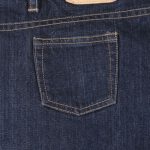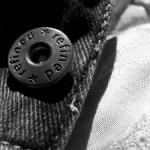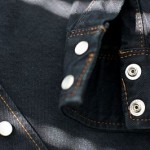Jeans have evolved since their origins over a century ago. While they are still made of the same denim material, they are now available in many different cuts. The cut refers to the way in which a pair of jeans sits on or hangs from your body when worn. Boot-cut jeans, for instance, feature a unique design that makes them ideal for use with boots. If regularly wear boots in your daily outfits, you may want to invest in a pair of premium boot-cut jeans.
What Are Boot-Cut Jeans?
Boot-cut jeans are denim trousers that feature a tapered construction that becomes wider from the knees to the hem. The hem, of course, is the bottom. All jeans have two pant legs, with each pant leg stopping at the hem. With boot-cut jeans, the pant legs become wider towards the hem, resulting in a spacious bottom that’s capable of accomodating a pair of boots.
They are known as “boot-cut jeans” because they can be easily, as well as comfortably, worn with a pair of boots. It’s no secret that boots are taller than most forms of footwear. While athletic shoes and tennis shoes are typically short, boots can extend 1 or more inches up your ankles when worn. Regardless of how tall your boots are, you can probably wear them with boot-cut jeans.
Boot-Cut vs Traditional Jeans
The main difference between boot-cut jeans and traditional jeans is that the former features a tapered construction that becomes wider towards the hem, whereas the latter does not. Traditional jeans generally run straight through their pant legs. In other words, they don’t become wider the hem, nor do they become skinner. Traditional jeans are designed to run straight through their pant legs. From the thigh to the knee and then the hem, they generally run straight without tapering.
While they are available in many different types, all boot-cut jeans have a tapered construction. They’ve been around for longer than most people realize. During the early to mid-1900s, Levi Strauss launched a line of jeans marketed towards boot-wearers. These boot-cut jeans featured the same tapered construction as those manufactured today. Boot-cut jeans simply become wider towards the hem, whereas traditional jeans generally run straight towards the hem.

Reasons to Wear Boot-Cut Jeans
Why should you choose boot-cut jeans exactly? For starters, there’s no better choice of denim trousers if you’re planning to wear boots with them. Boot-cut jeans live up to their namesake by allowing for a comfortable fit when worn in conjunction with boots.
With their tapered construction, you can wear boot-cut jeans over the top of your boots. As previously mentioned, most boots are tall. Some of them rise 1 above the ankles when worn. Other boots are even taller and capable or rising 2 or 3 inches above the ankles when worn. Regardless, you can conceal the top of your boots by wearing boot-cut jeans with them. The tapered construction of boot-cut jeans means that you can place the bottom of their pant legs over the top of your boots.
Boot-cut jeans are also comfortable. You don’t have to worry about them cutting into your sides, waist or legs. Rather, you can comfortably wear boot-cut jeans all day long. Boot-cut jeans are regarded as one of the most comfortable types of jeans thanks to their tapered construction.
Choosing the Right Boot-Cut Jeans
When shopping for boot-cut jeans, one of the decisions you’ll have to make is whether to choose a traditional denim construction or a stretch denim construction. All jeans are made of denim — and boot-cut jeans are no exception. With that said, some of them are made of traditional denim, whereas others are made of stretch jeans.
Stretch denim boot-cut jeans are defined by their use of stretch denim. They aren’t made entirely of denim. Stretch denim is a hybrid material consisting of denim and at least one elastic fabric. Elastic fabrics used in stretch denim include lycra, polyester and Spandex. Stretch denim boot-cut jeans are still made primarily of denim, but they contain about 1% to 3% of an elastic fabric, which makes them stretchy.
Something else to consider when choosing boot-cut jeans is whether you want a raw or washed construction. Raw jeans are those made of unwashed denim (or stretch denim). Washed jeans, on the other hand, are those made of washed denim.
To take advantage of their benefits, you’ll need to choose boot-cut jeans in the right size. Choosing jeans in the wrong size is never a good idea. Depending on whether they are too small or too big, you may not be able to wear them. Alternatively, they may cause discomfort when worn. You can avoid these problems by choosing boot-cut jeans in the right size.
Here at MakeYourOwnJeans, we offer custom sizing for boot-cut jeans and other types of jeans. You don’t have to choose a fixed size consisting of static length and waist measurements. When ordering custom-sized boot-cut jeans, you can provide your own body measurements, resulting in the perfect fit each and every time.
You should consider the color when choosing boot-cut jeans as well. Like all jeans, they are available in dozens of colors. There are blue boot-cut jeans, and there are black, red, white and even green boot-cut jeans. Blue is undoutedbly the most popular color. Jeans have featured a blue color for over a century, so blue-colored jeans have become widely supported over the years. Nonetheless, you can still choose boot-cut jeans in an alternative color.
In Conclusion
Not all jeans are constructed in the same way. Some of them are designed to run straight through the knee and hem, whereas others are designed to taper and become wider. Boot-cut jeans fall under the latter category. They feature a tapered construction. With boot-cut jeans, you can place the bottom of the pant legs over the top of your boots. Other types of jeans can make it more difficult to wear boots. If your jeans run straight through the knee and hem, you may have to wear your boots over them.











